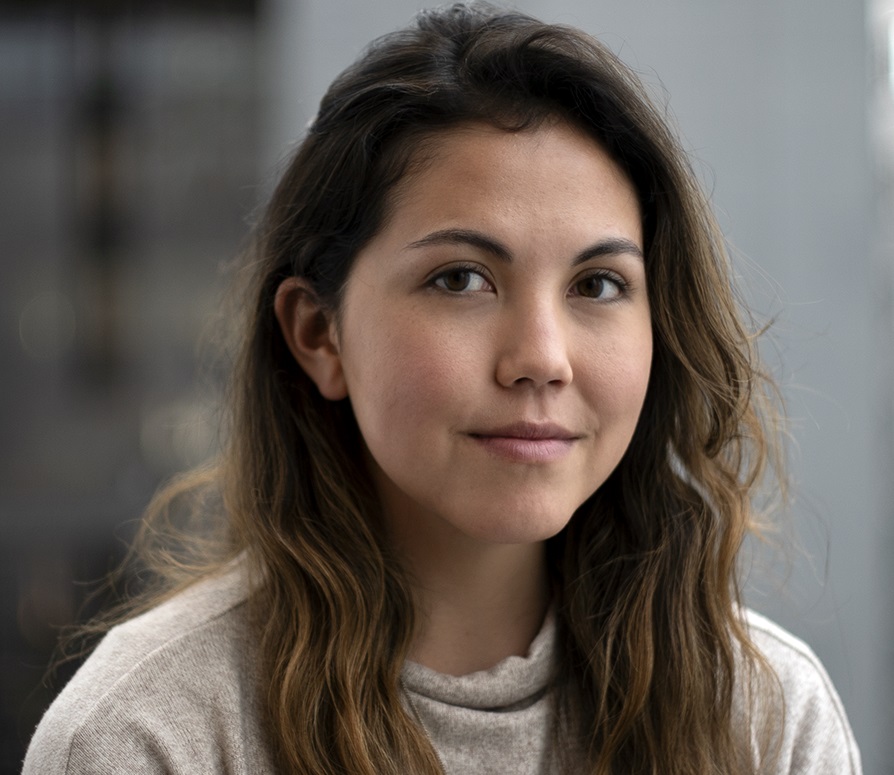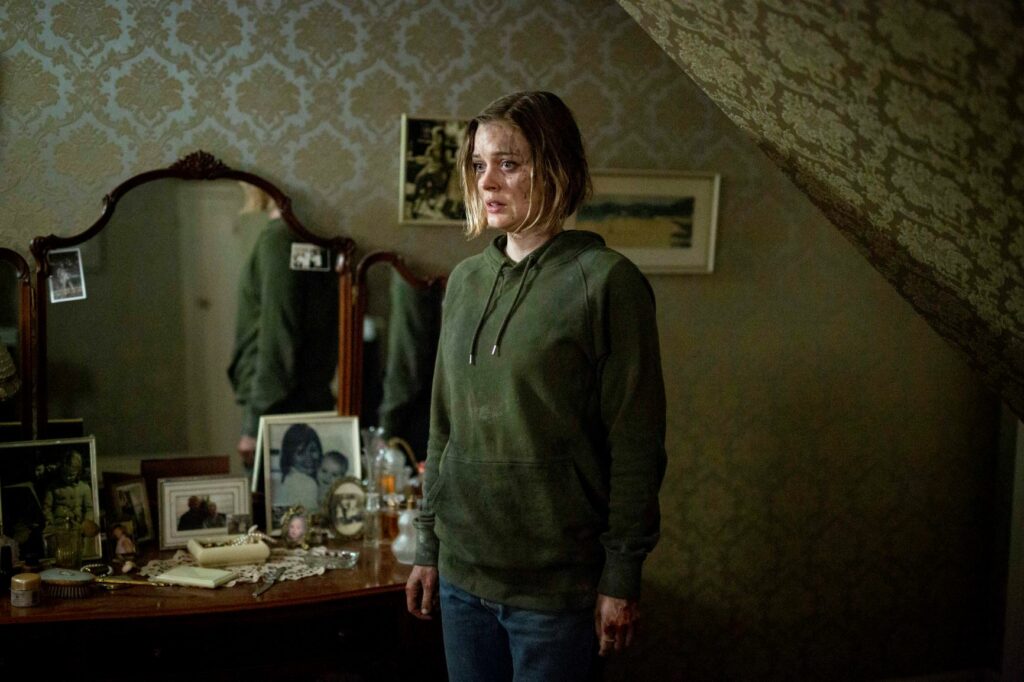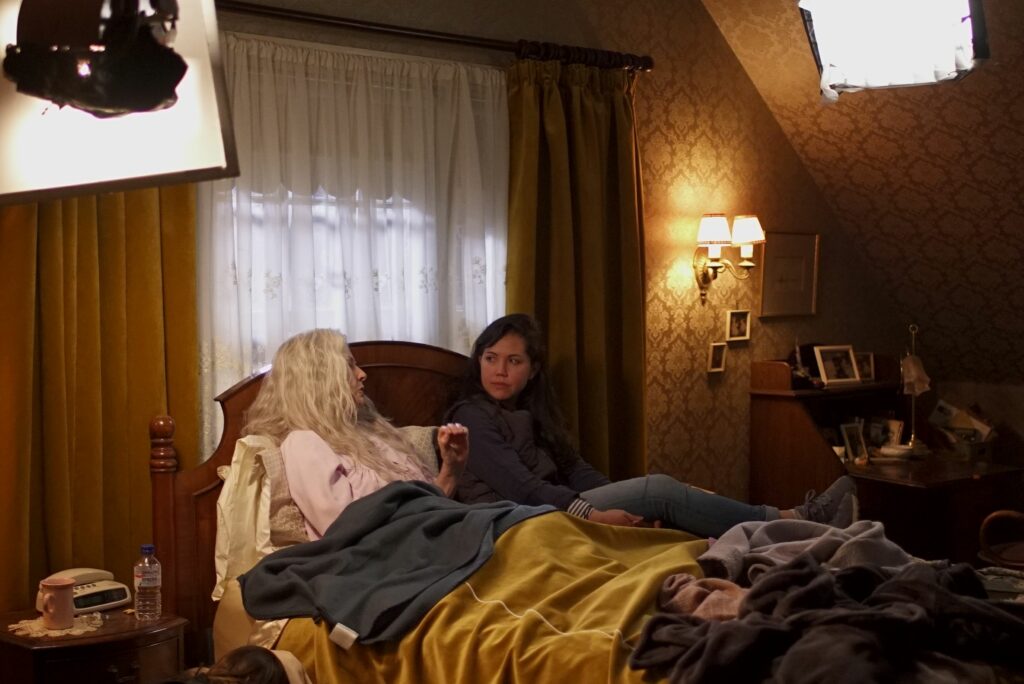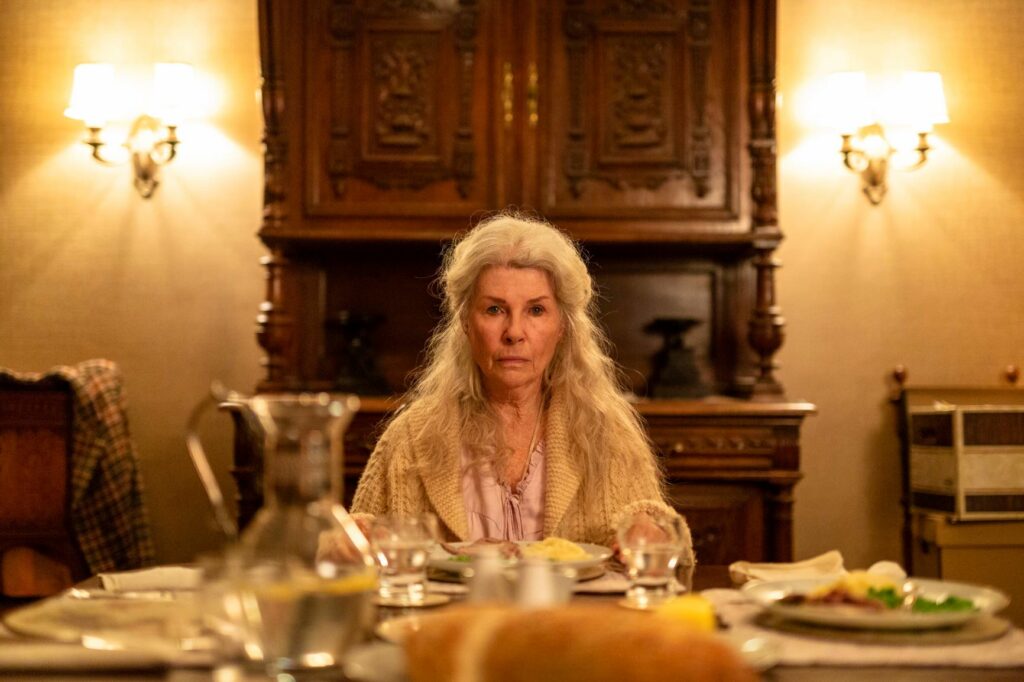Natalie Erika James’ feature directorial debut Relic stands firmly as one of this year’s best, most meaningful horror films and stars Emily Mortimer, Robyn Nevin and Bella Heathcote. A raw and haunting look into how dementia affects family relationships, Relic is a tightly woven, compassionate, and deeply claustrophobic film from the Japanese-Australian director and writer. Outtake had the pleasure of speaking with James ahead of the film’s UK release on October 29th. You can also ready our review here.
[The interview below may contain spoilers]
You’ve spoken about how this screenplay was inspired by your experience of your grandmother’s illness. What pushed you to make this your first feature?
The backstory is that I started writing it while on a trip to visit her. And unfortunately, it was the first time she couldn’t remember who I was. And I remember feeling a lot of guilt and regret about not having gone to see her earlier. It was just a very strange experience to, you know, have someone who’s only ever looked at you fondly suddenly look at you like a stranger. That really made an impact, and that was kind of the starting point for the film. And I think as a filmmaker, you just write about the things you care about and the things that are weighing on your mind. So it felt quite natural to explore that topic.
You’ve obviously got a background doing supernatural horror shorts, but what was it about this story that lent itself so well to horror?
As you said, I already had an interest in horror, so perhaps it’s just the way my brain works. But what I love about horror is that it’s just a very interesting space to talk about fear and to externalise those fears in a largely psychological space. And I just find that sandbox really exciting to play in; the idea that you can capture an experience of fear on film is really exciting to me. So, I think in terms of Alzheimer’s, there’s definitely a lot of uncertainty and heartbreak, but also a lot of fear in that process of someone declining, both for the person with Alzheimer’s and for those looking after them. I think the root of this fear is a fear of mortality, which is kind of the root of all horror films.

It’s interesting that you say it’s about a fear of death, because most of the horror comes from the motifs of decay, which suggests the loss of self is something more frightening than death.
Yeah, absolutely. There’s definitely that because in a way, particularly with Alzheimer’s, because you have to constantly confront that loss of someone, it’s a very different experience to grieving someone who’s passed away. You have to grieve someone who’s still there.
Why did you decide to make this a multi-generational story, rather than focusing on the relationship between grandmother and granddaughter?
I suppose it came about naturally, because so much of it was about shifting dynamics within a family, and a lot of that comes from observing the ways in which children have to start parenting their parents. So there would probably be a missing link if Emily Mortimer’s character Kay wasn’t there, because she is the one who has to take responsibility for her mother. Some of those practical elements can be tough, as opposed to a grandchild who tends to be let off the hook in terms of making those big decisions. I think it would have been a missed opportunity if we had just done a granddaughter-grandmother story.
You use the decay of Edna’s house as a powerful allegory for the deterioration of her mind – what were some of your inspirations for the set-design?
It’s funny, I think the way in which the house grows deeper into itself and that kind of sense of it becoming fragmented, that was probably the first image that came to me for the film. Partially that was to do with my grandmother’s house, which always really scared me as a kid, and there were these rooms upstairs that were unused and just full of accumulated stuff. I kind of imagined them as… some of it was just junk, but a lot of it was mementos and memories. I made the jump that perhaps part of that tendency towards hoarding was about trying to hold onto the things that were slipping away. That was part of the consideration for the labyrinth-like hoarding space, linking that to the idea of her mind deteriorating.

In terms of design, I suppose part of it was trying to create a space rich with history and memory, but one where you could also feel things were acutely following this decline. We wanted to find a space that wasn’t overtly signalling the horror, and instead we wanted to have some sweetness and cosiness to the space, a familiarity that slowly turns on its head and becomes completely unfamiliar. You know, I guess it mirrors your relationship with your loved one. Like they’re slowly turning into someone else, or at least it feels that way.
If the house represents her mind, what’s the significance of Kay and Sam moving through it, and being threatened and trapped in its walls?
I really like the idea that Kay and Sam are being drawn into an experience of Alzheimer’s. The sense of feeling trapped is extending to them, even though it might just be Edna who’s going through Alzheimer’s.
The mental and physical decay is visualised through black mould, which spreads over both the house and Edna’s body. Why did you decide to include that element of body horror?
In the simplest terms, it’s a way to visualise the decay, right? There’s also a sense of inheritance because of how the mould’s origin is tied into the great grandfather’s story… I find it so hilarious trying to parse out the logic of supernatural mould! But essentially, it’s the story of this neglected man’s death leaving a mark, and the idea that his body became covered in black mould, which seeped into this relic of a stained-glass window and infested the house. I was initially draw to the idea because black mould is so hazardous in real life, so it felt like a good fit.

Speaking of that idea of inheritance, would you say there’s also this fear felt by the younger women that they might themselves become victims to the disease?
Yeah, I think that’s definitely something that we all have to come to terms with, even if it’s not Alzheimer’s or anything hereditary. There’s something about seeing grandparents decline and die that inevitably makes you think about your own future with your parent, and then by extension think about your own mortality. It’s harrowing on a number of levels.
That is really beautifully captured in those closing scenes, seeing Edna’s body stripped of its flesh to reveal this smooth, almost mummified, and blackened form. What are you hoping people take away from those final images?
For me, it’s a really hopeful ending. I mean, some people say, “Oh God, what the hell was that? That’s so morbid”. But the purpose of the scene is to highlight the importance of connection in the face of these terrifying concepts of ageing and death’s inevitability. In some ways, the brevity of our lives is what makes them all the more precious. That’s the core sentiment I was trying to drive home. What I want really is for audiences to have some sort of cathartic experience; there’s something really powerful about seeing what you’ve gone through emotionally reflected on screen, I think it helps you process grief and feel less alone in the experience.
And visually, what were some of your inspirations for Edna’s final form?
I’ve always been really drawn to artwork, paintings where death is personified or just general representations of death. But at the same time, we tried to draw from real life – so in terms of how Edna looks at the end, that’s not dissimilar to someone near the end of their life, when they’re wasting away and have a real alien quality to them. It’s a very specific, surreal state that they enter. In a lot of ways, we were just trying to mimic that.

Like you said, it does end on this strangely hopeful note despite it being about loss and death. How do you hope your film can influence someone’s way of thinking about Alzheimer’s?
I don’t know if the aim is to influence anyone. I feel like everyone’s experience of it is so different, I don’t think there’s one definitive point that the film needs to make. It’s more about trying to capture the emotional experience of losing a loved one to the disease and the emotional turmoil and self-assessment that happens. It’s like a Rorschach painting where the audience member applies their own experience to the film, and whatever comes out the other side, hopefully it’s positive.
And lastly, what future projects do you have in the works?
I’m working on a few things. They’re all in the horror space, but different subsets of horror. The one that’s furthest along is a folk horror set in Japan, which is thematically similar to Rosemary’s Baby, all about the fear surrounding motherhood and the push and pull between selfhood and motherhood. And I’m also working on a possession film. Well, my version of a possession film, and a body horror. Yeah!
Relic releases in cinemas and on digital HD on October 30th, with previews in Showcase cinemas October 29th.
